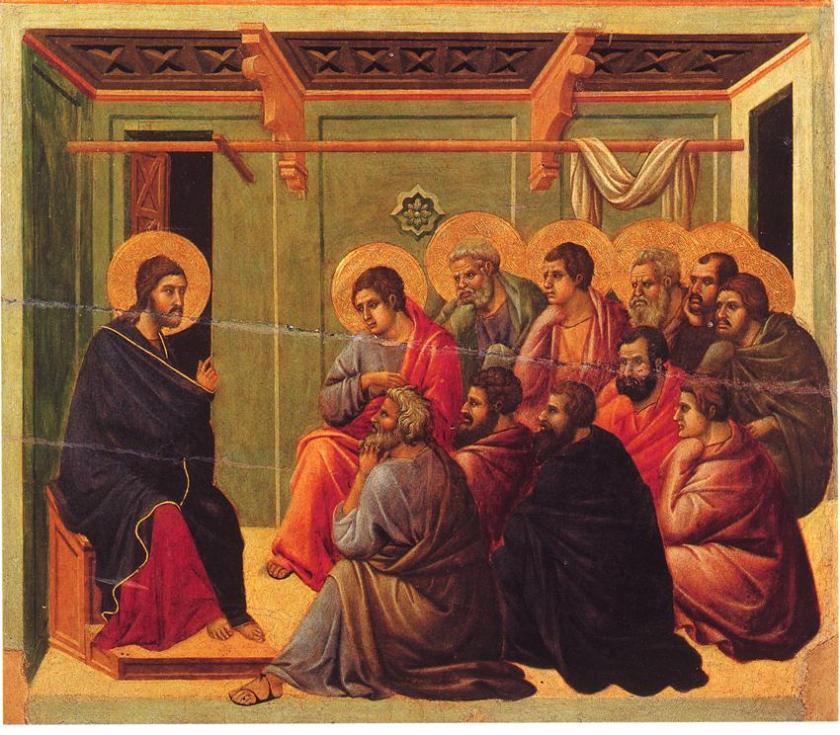
The Gospel of John is a favorite among many. Rather than reading short bits of narrative with generally short teachings, John is filled with long teachings and little narrative (take John’s Farewell Discourse, which extends from John 13-17!). John is shallow enough for a child to understand, but deep enough for scholars to spit out huge tomes and never know all that John means. Since each generation needs fresh exegesis, Edward Klink has given us his interpretation of John’s Gospel in the new ZECNT series. Klink reveals his theological cards early on in his 54 page introduction:
“‘Scripture’ is a shorthand term for the nature and function of the biblical writings in a set of communicative acts which stretch from God’s merciful self-manifestation to the obedient hearing of the community of faith.” While such language might not be common vernacular in an introduction to an exegetical commentary, it should be, for the object of interpretation demands to be treated according to its true and sacred nature. Not to treat this Gospel as Scripture is itself a form of eisegesis, and it is a disobedient hearing of the (canonical) text’s own claim and of the God by whom it was authored. (25)
Klink notes that the Scriptures have their own genre—holy Scripture. The way God (or, here, the Gospel) speaks determines how we read Scripture:
- The Gospel speaks in time-and-space history, and history must remain subservient to the God of creation.
- The Gospel speaks in literary form, and the words must stay subservient to the Word.
- The Gospel speaks about the things of God, and theology must be defined by the person and work of God himself, the true subject matter of the things of God. (25)
Our doctrine of Scripture guides us to see God through “the work and person of Jesus Christ by the empowering Holy Spirit” (31).
Klink doesn’t try to historically reconstruct the event of John’s Gospel (besides John 2.1–11), because “each Gospel must be interpreted for the individual Gospel’s role or contribution to the one gospel, not in a manner that combines their events but in a manner that prepares to hear in unison their individual roles in the symphony of the gospel” (36).
Klink says (rightly) that the Bible is not a window to what is inspired; it “is the locus of revelation” (29). Our texts do refer to historical people, places, and events, but rather than seeing the Bible as a window to the inspired events, in God’s Word “God is giving divine commentary on his own actions in history” (29). “The meaning is derived from the text which speaks about an event” (34).
Commentary Divisions
The ZECNT commentaries divide each section into seven parts: Literary Context, Main Idea, Translation and Graphical Layout, Structure, Exegetical Outline, Explanation of the Text, and Theology in Application. I giver a fuller explanation of each section on my review of Grant Osbourne’s Matthew volume. Though I don’t always find the Translation and Graphical Layout section to be helpful, each of the other sections, especially the Main Idea (which compresses the passage into a brief sentence) and the Theology in Application (and which brings out helpful insights), are extremely useful.
Klink’s Interpretations
I can’t rehearse all Klink says, but here is a taste.
1.1: “The Word” is not common in the NT as a reference to Christ. John explains his use of the term throughout John’s whole Gospel (87).
Klink distinguishes historical contexts, narrative contexts, and cosmological contexts. In 7.27-28, Klink says
The reverberations from the prologue are crying out to the reader, who is well aware that Jesus is the Word-become-flesh, the light of humanity, the one “from above,” who was “in the beginning” with God. The cosmological identity of Jesus, so visible to the reader, remains completely veiled to the Jerusalemites. The one these interlocutors call “this man” the reader has been told is “God” from the very beginning of the Gospel (1:1). (370)
In the historical sense, the Jewish leaders know his physical ancestral lineage. In the cosmological sense, “they have no idea who he is or whose ancestral lineage they have challenged by their unbelief,” and within the narrative, Jesus rebukes their unbelief and prideful opposition to him. They should know better.
12.40: “God is the cause of the unbelieving response to Jesus, not merely the judge of it. If the depiction of God as the cause of unbelief makes God look unjust, we must look not for resolution in the doctrine of God alone but in the presentation of God provided by his Son, Jesus Christ, who perfectly exemplifies the mercy and grace of God” (560).
John 17: The pericope of John 17 “concludes Jesus’s farewell speech by setting the theological (cosmological) context of Jesus’s entire ministry and the work God will continue to do” (705).
Other Matters
Outside sources?
In his section on “Text Verses Event” (34-36), Klink says the location of revelation “is not the event behind the text but the text as Scripture, so that revelation is located in the text in a manner that includes not only the recorded account but also the interpretation . . . of the account” (34). As he goes on to argue, the author has included specific events, themes, and words for a reason, and as well that same author has decided not to include other events, themes, and words.
Klink says “To try to reconstruct what is not revealed in Scripture, unless the text gives implicit warrant, potentially creates a different story than the narrative.” (35). The author has already given us his perspective on the event in his narrative; why go looking for another perspective?
While I agree that “There is no better place from which to access what is real and true than from the words of Scripture,” and that “the reader is actually in a preferred position, beyond even those who were present at the historical event,” what does this mean when it comes to using other documents to place the text in its historical timeframe (36)? Is it to the scholar’s detriment to use ANE documents to understand the thinking of the ancient Israelite? How much of the intertestamental period are we to (or not to) understand?
I am in much agreement with what Klink says here, but because he doesn’t give a specific example as to what he means (such as those seen in my questions above), I’m not sure how far to take what he says. Right now it appears to me that it is helpful to read historical documents (such as the Apocrypha, Pseudepigrapha, Greek and Roman writings, etc.) to situate us in the 1st century AD thought-world with the knowledge that Scripture is the revelation from God and of God.
Recommended?
There are an enormous amount of commentaries on John, do we, do you, need another one? I’ll be honest, I haven’t read most of them, but “every generation must exegete Scripture in and for the church” (11). Klink emphasizes the use of one’s imagination (cf. John 7.1–13), and this is something that many theologians, commentators, interpreters, pastors, and Bible teachers need to learn (myself included). Imagination is required both in application and in interpretation. Klink’s commentary reminds me of Mark Seifrid–by looking at the text as a whole unit within the whole canon, Klink is able to see through and around the exegetical issues. He brings in nuances and twists of words (3.5–7). Klink is a humble interpreter, and he has written this volume primarily for pastors, bible teachers, and students. I hope this volume will be read widely.
Lagniappe
Previous Posts
Posts from Zondervan
Disclosure: I received this book free from Zondervan. The opinions I have expressed are my own, and I was not required to write a positive review. I am disclosing this in accordance with the Federal Trade Commission’s 16 CFR, Part 255 http://www.access.gpo.gov/nara/cfr/waisidx_03/16cfr255_03.html.
Amazon Affiliate Disclosure: I receive a percentage of revenue if you buy from Amazon on my blog.



